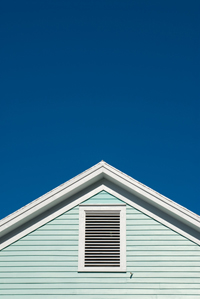 Learn How to Use Your Attic as a Cap on Your Home’s Conditioned Air
Learn How to Use Your Attic as a Cap on Your Home’s Conditioned Air
Attic insulation and attic ventilation are two things that work together to keep your Long Island home comfortable. They require neither fuel nor electricity, and they use no energy. The two go hand-in-hand to help you maintain a comfortable, balanced indoor environment. The combination of insulation and ventilation performs two critical functions: it works to reduce moisture and control temperature.
Moisture Reduction
Homes and the environment both produce humidity. Humidity in the home can rise to the ceiling with warm air. As it rises, it can collect inside the attic and cause problems. A good insulation barrier combined with a moisture barrier can prevent this. However, when moisture does penetrate into the attic, your attic ventilation is there to remove it. Attics are ventilated so that there is an inlet and outlet for air circulation. In summer, when humidity is highest, this ventilation prevents your roof materials from accumulating dampness and beginning to rot. In winter, the insulation keeps most of your heat and humidity from escaping into the attic.
Temperature Control
Attic ventilation takes place continuously, 24 hours a day. In summer, attic ventilation allows heat buildup to escape, which keeps your home’s interior cool. Your attic insulation also acts as a barrier in two directions: That insulation barrier prevents heat and moisture from escaping into the attic, where it can condense and rot roofing material and rafters. It also blocks heat or cold from coming into the house.
Without good ventilation, attic insulation can accumulate moisture and become useless. Likewise, without a good layer of insulation, humidity can collect in your attic and cause serious problems. Attic ventilators can also help increase airflow; several sizes and models are available.
Insulation is measured by an R-value, which indicates its degree of thermal resistance. Recommended insulation levels for our area are: R-13 in outside walls, R-19 in the floor, and R-38 for attics. An HVAC specialist can examine your home’s various insulation levels to see if they are adequate.
When you have questions about your ventilation or insulation, contact our team at T.F. O’Brien Cooling and Heating. We’re always ready to tackle any questions you may have about your home comfort.
